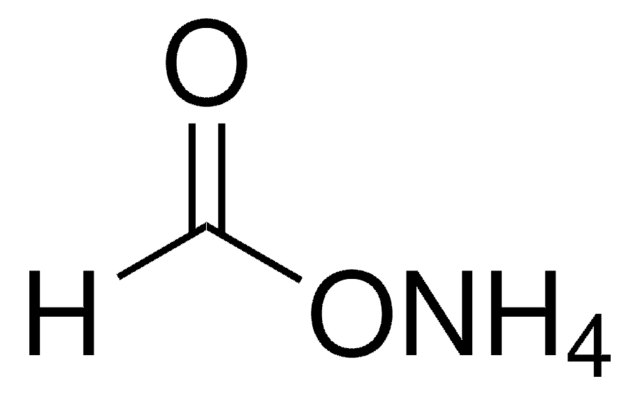Kluczowe dokumenty
20801
1,1,1-Trichloro-2-methyl-2-propanol hemihydrate
meets analytical specification of Ph. Eur., BP, NF, 98-100.5% (calc with ref. to anhyd. subst.)
Synonim(y):
β,β,β-Trichloro-tert-butyl alcohol hemihydrate, ‘Acetone chloroform’, ‘Chlorobutanol’
About This Item
Polecane produkty
Poziom jakości
Próba
98-100.5% (calc with ref. to anhyd. subst.)
Formularz
solid
jakość
meets analytical specification of Ph. Eur., BP, NF
zanieczyszczenia
≤0.002% heavy metals (as Pb)
4.5-5.5% water (Karl Fischer)
pozostałość po prażeniu
≤0.1% (as SO4)
mp
76-80 °C
ślady anionów
chloride (Cl-): ≤100 mg/kg
Zastosowanie
pharmaceutical (small molecule)
ciąg SMILES
O.CC(C)(O)C(Cl)(Cl)Cl.CC(C)(O)C(Cl)(Cl)Cl
InChI
1S/2C4H7Cl3O.H2O/c2*1-3(2,8)4(5,6)7;/h2*8H,1-2H3;1H2
Klucz InChI
WRWLCXJYIMRJIN-UHFFFAOYSA-N
Szukasz podobnych produktów? Odwiedź Przewodnik dotyczący porównywania produktów
Zastosowanie
Działania biochem./fizjol.
Hasło ostrzegawcze
Warning
Zwroty wskazujące rodzaj zagrożenia
Zwroty wskazujące środki ostrożności
Klasyfikacja zagrożeń
Acute Tox. 4 Oral
Kod klasy składowania
11 - Combustible Solids
Klasa zagrożenia wodnego (WGK)
WGK 3
Temperatura zapłonu (°F)
212.0 °F - closed cup
Temperatura zapłonu (°C)
100 °C - closed cup
Środki ochrony indywidualnej
dust mask type N95 (US), Eyeshields, Gloves
Wybierz jedną z najnowszych wersji:
Masz już ten produkt?
Dokumenty związane z niedawno zakupionymi produktami zostały zamieszczone w Bibliotece dokumentów.
Klienci oglądali również te produkty
Nasz zespół naukowców ma doświadczenie we wszystkich obszarach badań, w tym w naukach przyrodniczych, materiałoznawstwie, syntezie chemicznej, chromatografii, analityce i wielu innych dziedzinach.
Skontaktuj się z zespołem ds. pomocy technicznej








